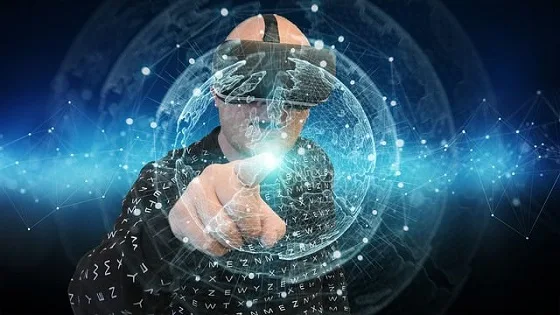Augmented reality (AR) is a new technology that allows users to overlay digital content on the real world. It can be used to create more engaging and interactive learning experiences, helping students understand concepts better.
The benefits of AR in education:
There are many potential benefits to using AR in education, including:
- Increased interactivity: AR can help students interact with educational content in a more interactive way. For example, it can be used to display 3D models of scientific materials and systems or to take students on virtual tours of historical sites.
- Improved understanding: AR can help students understand concepts better by providing more immersive and engaging learning experiences. For example, it can be used to display chemical processes or to train students on skills such as surgery.
- Increased engagement: AR can help motivate students and make learning more fun. For example, it can be used to create educational games or to display interactive science experiments.
- Improved self-directed learning: AR can help students learn independently by providing personalized learning experiences. For example, it can be used to provide personalized instruction or to create educational games tailored to individual students.
Using AR in education:
AR can be used in a variety of educational applications, including:
- Science: AR can be used to display 3D models of scientific materials and systems. For example, it can be used to help students understand the structure of a cell or the life cycle of a plant.
- Mathematics: AR can be used to display graphs and data interactively. For example, it can be used to help students understand mathematical concepts such as algebra and geometry.
- Language: AR can be used to help students learn vocabulary and grammar interactively. For example, it can be used to display words and sentences in a foreign language in the real world.
- History: AR can be used to take students on virtual tours of historical sites. For example, it can be used to help students understand historical events such as the French Revolution or the American Civil War.
- Arts: AR can be used to create interactive art experiences. For example, it can be used to help students create 3D artwork or to display historical artwork in the real world.
Countries using AR in education:
Many countries are using AR in education, including:
- United States: The United States is leading global efforts in the field of AR in education. There are many schools and universities in the United States that use AR in their classrooms.
- China: China is also a leading country in the field of AR in education. There are many government initiatives in China that focus on developing and deploying AR technologies in education.
- United Kingdom: The United Kingdom is investing heavily in the field of AR in education. There are many educational institutions in the United Kingdom that use AR in their classrooms.
- Japan: Japan focuses on using AR in education to promote innovation and creativity. There are many Japanese companies that are investing in developing AR applications for use in education.
- Germany: Germany focuses on using AR in education to improve students' skills in science, technology, engineering, and mathematics. There are many German schools that use AR in their classrooms.
In addition to these countries, there are many other countries that are using AR in education. These countries include:
- Canada
- France
- Spain
- Italy
- Russia
- Brazil
- India
- Australia
- New Zealand
It is expected that more countries will adopt AR in education in the coming years.
Key AR education websites, apps, and programs:
Here are some of the key AR education websites, apps, and programs:
Websites:
- AR in Education World: A website that provides information about the use of AR in education.
- AR Learning Hub: A website that provides educational content about AR.
- AR Education News: A website that provides news and analysis about the use of AR in education.
Apps:
- Google Expeditions: An app that provides virtual tours of historical and scientific sites.
- Khan Academy Kids: An educational app for children that uses AR to help students learn basic concepts.
- Quiver: AR Drawing: An app that allows users to draw 3D images.
Programs:
- Augmented Reality Toolkit for Unity: A toolkit that allows developers to create AR applications using Unity.
- ARCore: An AR platform from Google.
- ARKit: An AR platform from Apple.

